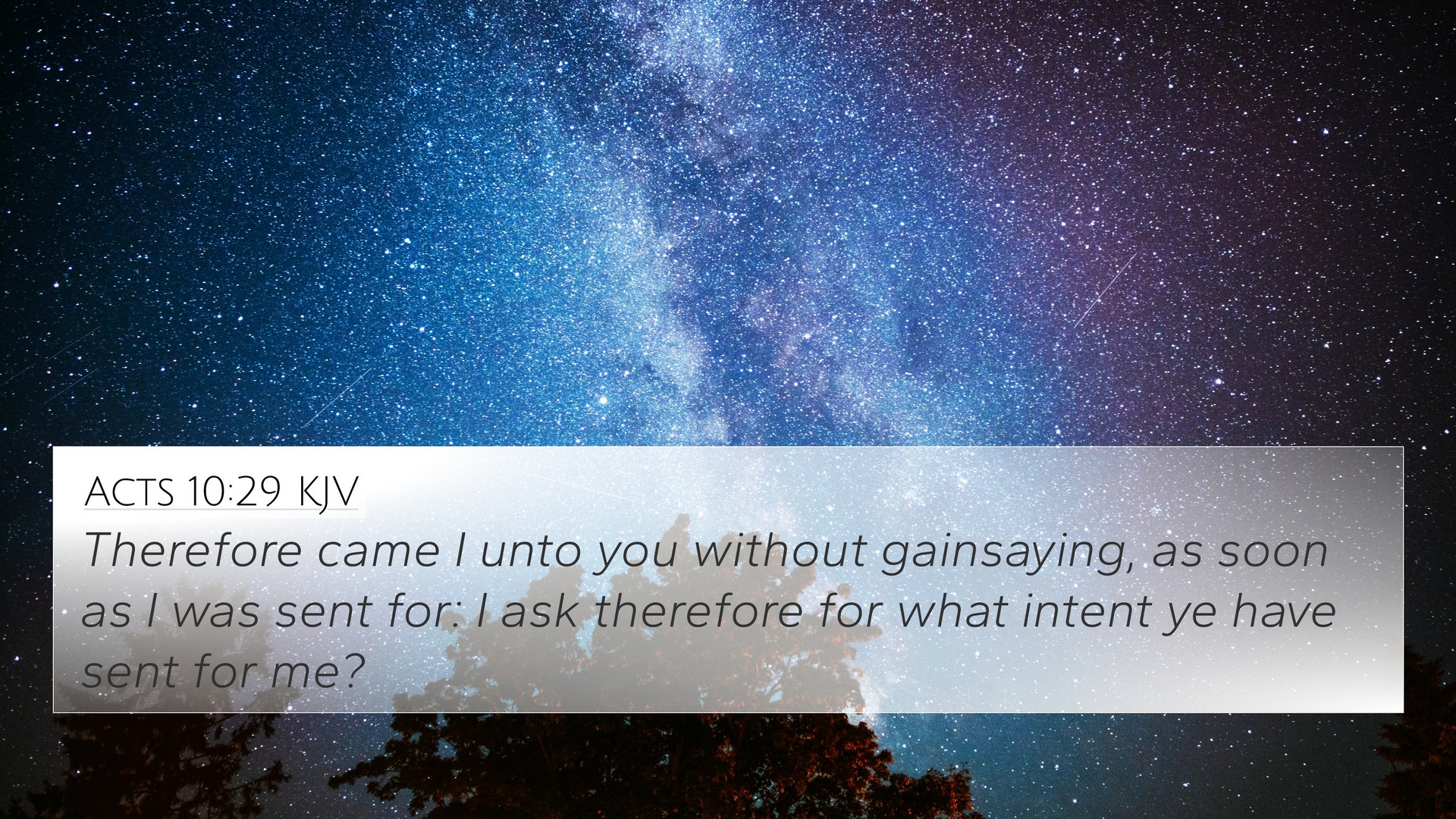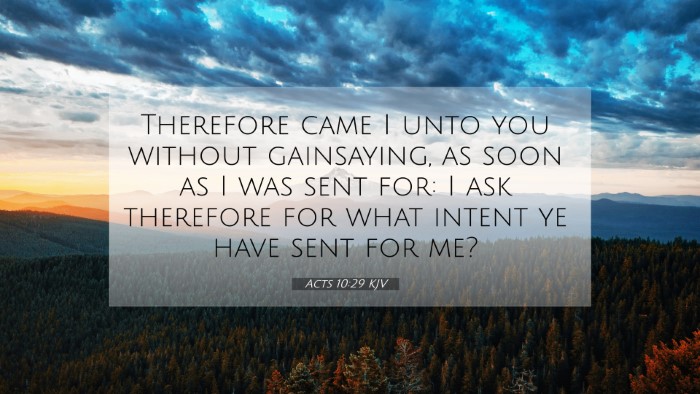Understanding Acts 10:29
Acts 10:29: "Therefore I came unto you without gain saying, as soon as I was sent for: I ask therefore for what intent ye have sent for me?"
Summary of the Verse
The context of Acts 10:29 involves the Apostle Peter's encounter with Cornelius, a Gentile centurion, who was guided by a vision to send for Peter. In this verse, Peter expresses his willingness to come to Cornelius without hesitation, indicating a significant development in the early Church regarding the acceptance of Gentiles into the faith.
Commentary Insights
Matthew Henry's Commentary
Matthew Henry emphasizes Peter’s obedience to the divine calling and the openness that God desires in believers. He points out that Peter, without questioning the legitimacy of the request, was eager to fulfill the mission given to him by the Lord. This emphasizes the theme of divine guidance and the breaking down of barriers between Jews and Gentiles.
Albert Barnes' Notes
Barnes notes that Peter's question, "for what intent ye have sent for me?" reflects a humble approach, showing his desire to understand God's purpose in leading him to Cornelius. This encounter serves to demonstrate that God’s plan encompasses all peoples, not just the Jewish nation, thus encouraging inclusivity in the early church.
Adam Clarke’s Commentary
Clarke highlights the significance of Peter's role as a bridge between Jewish believers and the Gentiles. His inquiry signifies a recognition of his divine mission and an understanding of the gravity of the situation. It underscores the theme of receptiveness to the Gospel and the expansion of God’s covenant to all nations.
Thematic Connections
Acts 10:29 serves as a crucial point in the narrative of the early Church as it portrays themes of:
- Divine Revelation: God's direction towards Peter and Cornelius illustrates the active role of the Holy Spirit.
- Openness and Inclusivity: The welcoming of Gentiles into the faith signifies the universal call of the Gospel.
- Obedience to God's Call: Peter's immediate response serves as an example for believers to follow divine guidance without hesitation.
- Understanding Mission: The dialogue reflects the need for clarity in fulfilling God's purpose.
Bible Verse Cross-References
This verse is connected to various Bible passages that deepen understanding of its themes:
- Acts 10:34-35: God shows no favoritism, a direct extension of the themes seen in Peter's encounter.
- John 10:16: Jesus speaks of other sheep not of this fold, anticipating the inclusion of Gentiles.
- Galatians 3:28: Paul emphasizes that there is neither Jew nor Gentile in Christ, echoing the message of unity.
- Romans 1:16: The Gospel is for everyone, a reassurance of its universality.
- Matthew 28:19: The Great Commission underscores the directive to go to all nations.
- Acts 11:17-18: A continuation of the story as the church grapples with Gentile inclusion.
- Ephesians 2:14-16: Christ’s work breaks down the dividing wall between Jews and Gentiles.
Practical Application
As modern believers, Acts 10:29 invites reflection on:
- Response to God's Call: Are we ready to act when God calls us, despite our initial reservations?
- Inclusive Faith: How can we foster an environment where all seek and find Christ, regardless of background?
- Understanding Purpose: Just like Peter, do we take the time to inquire about God’s intent in our lives?
Conclusion
Acts 10:29 encapsulates a pivotal moment in the Early Church that not only reshaped the community of believers but established the foundation for a faith that welcomes all. By cross-referencing this verse with others, we can gain profound insights into the unity of believers and the overarching narrative of inclusion and obedience to God’s will.





